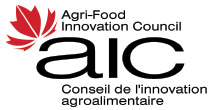Gender Equality Mainstreaming Digest – March 2018 Issue
Here are the highlights of this month’s Gender Equality Mainstreaming Digest! Click HERE for the full version.

Early Crocus blooms in the snow in Victoria, BC. Photo courtesy of D. Ceplis./
Highlights:
Opportunities and Upcoming Events:
UBC Certificate in International Development – Free Information Sessions The University of British Columbia UBC Certificate in International Development (CID) program prepares learners to function more effectively and contribute more meaningfully to development work in intercultural and international contexts. The program seeks to empower both beginners and current professionals in the field who are looking to learn new strategies and tools to enhance their work in international development.
All the courses in the program are offered in an online format centered around peer discussions that focus on practical application of theoretical frameworks and relevant tools. Courses are facilitated by practitioners and experts in the various disciplines.
This free online information session (webinar) provides participants with valuable information about the program. Choice of dates: February 28, May 9, or October 24.
Conference: AIC2018 – Education in Agricultural Sciences and Technology – Plan to attend AIC2018 from April 23-24 in Guelph, Ontario and help shape the future of Canadian education in agricultural sciences and technology.
5
As new global challenges arise, Canada’s agricultural and agri-food sector demands human capital with specific knowledge and skills sets. AIC2018 will discuss new ways in which the Canadian agricultural innovation system can help address highly-skilled technical and professional shortages and support the future generation of researchers and innovators.
This year’s conference will focus on four key themes:
- Envisaging Future Graduates – strategies to recruit, train and retrain agricultural researchers and innovators.
- Who are the future Students? – exploring what makes agriculture as a discipline and a profession appealing, and how to make agricultural education and training for innovation more inclusive, while building public trust in scientific research.
- Identifying the Educational Challenges – institutional challenges for agricultural sciences, trends in curriculum and program structure, and how to nurture leadership in entrepreneurship, innovation and education.
- Pathways to Transformation – identifying and recommending much needed curriculum and structural changes, exploring emerging technologies and identifying funding opportunities for future innovators, and looking at how to market agricultural programs globally and encourage student mobility.
This Month’s News:
Pulse power – In Ethiopia, protein-rich crops of pulses such as chickpeas are no longer playing second fiddle to maize and wheat, a shift that’s transforming lives. 10,000 women farmers, and 70,000 farmers overall, have been reached in the latest phase of this pulse-based food-security project, which is financed by the Canadian International Food Security Research Fund, a joint program of the International Development Research Centre and Global Affairs Canada, and ends in March 2018. The aim of Dr. Carol Henry’s program has been to encourage widespread planting of higher-quality pulse crops in addition to the cereals, and then to combine pulses with cereal in the porridge to boost its protein content.
Teachers: Download the workbook that accompanies this article Highlight the amazing work that the International Development Research Centre is doing around the world to your students. Each booklet contains a copy of the blog post and several different activities to help students understand the critical role Canadian work is playing in developing nations.
What Canadian farm women say about harassment – With all the #MeToo headlines about predators and creeps in entertainment and government, and with so many revelations about fair pay and fair treatment, we wanted to ask, how is agriculture doing? Here’s how it looks from the front lines.
Beth, like most people interviewed for this article, reported largely positive working relationships with the males in their professional circles. But everyone interviewed could also refer to a time when a boundary was crossed, when a person’s gender was a factor in a challenging situation.
Mary acknowledges there’s still a perception that if there’s a woman on the farm, she’s probably doing the bookkeeping. But she says there are plenty of women in her region who, like her, have more active roles.
And although she knows that for some men, those gender assumptions are sort of honest mistakes, and they only need an “ah-ha moment” to make them realize what they’re saying, for others, sexist attitudes toward women are more ingrained, and the offensive behaviour is intentional.
Cattle rancher Laura agrees sexism can be a problem on the farm for some women. She notes family operations can be particularly challenging, because there’s no human resources office to set and enforce guidelines or to offer solutions.
In that process, however, men can also find it difficult to know how to help agriculture make the transition.
In Southwestern Ontario, for instance, Derek was a kid growing up on the farm in the ’70s, ’80s and ’90s, going along to farm meetings with his dad. He says the speakers always seemed to start with a crude joke. A blonde joke, a racist joke. Often there was a punchline about a guy in a turban. It was only when he took a provincial farm leadership position that he said a light bulb came on.
2018 Canadian Federal Budget: Advancing Gender Equality Around the World – In Budget 2018, the Government is strengthening the impact of Canada’s new Feminist International Assistance Policy and advancing Canada’s international leadership in key areas. By making major new investments that focus on gender equality and the full empowerment of women and girls, the Government is helping bring about the change we need for a more equitable, prosperous world. Federal Budget 2018 Highlights for international assistance and gender equality:
- An increase to Canada’s international assistance envelope of $2 billion over five years dedicated to support humanitarian assistance and Canada’s core development priorities, in particular supporting women and girls.
- Increased transparency in the International Assistance Envelope (IAE) specifying allocations, including a dedicated pool for humanitarian funding and a separate dedicated pool of funding for core development assistance.
- Existing, unallocated International Assistance Envelope resources of $1.5 billion over five years will now be directed, starting in 2018-19, towards:
- a new International Assistance Innovation Program to give the Government greater flexibility for financing arrangements and partnerships ($873.4 million over five years on a cash basis and $290.5 million per year thereafter).
- a new Sovereign Loans Program to diversify tools Canada can use to engage partner countries and international development organizations (up to $626.6 million over five years on a cash basis and up to $202.2 million per year thereafter).
Reports Publications and Resources:
Teaching Sustainable Development Goals – The Manitoba Council for International Cooperation MCIC launched the Sustainable Foundations: A Guide for Teaching the Sustainable Development Goals. You can download all 238 pages or one goal at a time, from the website.
Goal #5 on Gender Equality is available here.
